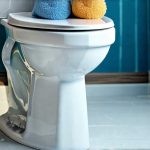Frequent urination – that persistent urge to visit the restroom – can be incredibly disruptive to daily life, impacting everything from work productivity to sleep quality. For men, it’s often a topic shrouded in silence, yet it’s surprisingly common and frequently linked to lifestyle factors as much as medical conditions. It isn’t simply about inconvenience; consistent interruption can lead to anxiety, social withdrawal, and diminished overall well-being. Understanding how your dietary choices play a role is a powerful first step towards managing this issue and regaining control of your daily routine. This article will explore practical meal tips designed to potentially minimize frequent urge experiences, focusing on what you can actively do through mindful eating habits.
It’s crucial to remember that frequent urination can stem from various causes – ranging from simple hydration levels to underlying medical concerns like an overactive bladder, diabetes, or prostate issues. This information is not a substitute for professional medical advice. If you are experiencing significant changes in your urinary patterns or suspect a medical problem, please consult with a healthcare provider for proper diagnosis and treatment. This article focuses on dietary adjustments that may offer supportive relief as part of a broader management strategy, alongside any prescribed medical interventions. We’ll look at how to build daily meals that consider bladder health and minimize irritants, rather than promising cures or quick fixes.
Dietary Strategies for Bladder Control
The link between diet and urinary frequency is often underestimated. Certain foods and beverages can act as bladder irritants, triggering the urge to urinate even when your bladder isn’t full. Others, conversely, can have a calming effect, promoting better bladder control and reducing discomfort. The core principle here isn’t about restriction so much as mindful substitution and balance – finding ways to enjoy food while minimizing potential triggers. It’s also important to understand that everyone reacts differently; what bothers one person may not affect another. Keeping a food diary can be immensely helpful in identifying your personal trigger foods. Consider complementing this with insights from daily food diary tips to better understand your patterns.
One of the most significant dietary adjustments involves managing fluid intake. While staying hydrated is essential for overall health, timing and type matter. Avoid large volumes of fluids close to bedtime or before long periods where restroom access is limited. Instead, spread your fluid intake evenly throughout the day. Consider switching from large gulps to smaller, more frequent sips. Also, be mindful of diuretic beverages – those that promote increased urine production – like coffee, tea, and alcohol. These aren’t necessarily off-limits, but moderation is key. Experiment with herbal teas or water infused with fruits for a refreshing alternative. Proper hydration can also benefit from reviewing hydration-aware meal design strategies.
Finally, focusing on foods that support overall urinary tract health can be beneficial. Foods rich in antioxidants and anti-inflammatory compounds may help soothe the bladder and reduce irritation. Berries, particularly cranberries (although their effect is debated), are often cited as helpful. However, avoid cranberry juice cocktails which often contain high amounts of sugar. Incorporating more fiber into your diet can also contribute to a healthier digestive system, indirectly supporting bladder function. A balanced diet with plenty of fruits, vegetables, and whole grains provides the foundation for good health – and potentially better bladder control.
Foods to Consider & Avoid
Navigating dietary choices requires understanding which foods are likely to exacerbate urinary frequency and those that might offer support. It’s not about strict elimination but rather informed decisions based on individual tolerance. Many common foods contain compounds that can irritate the bladder, leading to increased urgency. Identifying these triggers is a crucial step in managing symptoms. For example, spicy foods often contain capsaicin, which can be a potent irritant for some individuals. Similarly, acidic fruits and vegetables – like citrus fruits, tomatoes, and vinegar-based dressings – may cause discomfort.
On the flip side, certain foods are known for their bladder-soothing properties. Foods high in potassium, such as bananas and sweet potatoes, can help regulate fluid balance. Complex carbohydrates, like oatmeal and brown rice, provide sustained energy without causing rapid spikes in blood sugar levels that can contribute to urgency. Lean proteins support overall health without adding unnecessary strain on the kidneys. A diet rich in these supportive foods doesn’t guarantee a solution, but it contributes to a more balanced and potentially less irritating internal environment. Remember that individual responses vary significantly; experimentation is key. To further optimize your dietary choices, explore the best diet for men with frequent urination.
Optimizing Hydration
Hydration is arguably the cornerstone of bladder management, yet it’s frequently misunderstood. Simply drinking more water isn’t always the answer. The goal is consistent, appropriate hydration tailored to your activity level and climate. A general guideline is around 8 glasses (64 ounces) per day, but this can vary significantly based on individual needs. Listen to your body – thirst is a good indicator, but don’t wait until you’re parched to drink.
Here’s how to optimize hydration for better bladder control:
1. Distribute fluid intake evenly throughout the day rather than consuming large amounts at once.
2. Reduce fluid consumption 2-3 hours before bedtime to minimize nighttime urination.
3. Identify and limit diuretic beverages like coffee, tea, and alcohol.
Consider tracking your daily fluid intake for a week or two to see how it correlates with your urinary frequency. This can help you fine-tune your hydration strategy. Don’t forget that other sources contribute to fluid intake – fruits and vegetables have high water content. You might also find hydration tips for men with flow confusion helpful in understanding your body’s signals.
The Role of Fiber & Digestion
A healthy digestive system is intrinsically linked to bladder health. Constipation, in particular, can put pressure on the bladder, leading to increased urgency and frequency. Adequate fiber intake is essential for maintaining regular bowel movements and relieving this pressure. Aim for at least 25-30 grams of fiber per day from sources like whole grains, fruits, vegetables, and legumes.
Beyond quantity, type of fiber matters too. Soluble fiber – found in oats, beans, and apples – absorbs water and forms a gel-like substance that helps regulate bowel movements. Insoluble fiber – present in wheat bran and many vegetables – adds bulk to stool, promoting its passage through the digestive system. A combination of both is ideal. Furthermore, probiotic-rich foods like yogurt and kefir can support gut health, further improving digestion and potentially reducing bladder irritation.
Managing Caffeine & Alcohol Intake
Caffeine and alcohol are well-known bladder irritants. Both act as diuretics, increasing urine production and triggering the urge to urinate. They also have a direct effect on the detrusor muscle – the muscle responsible for bladder contraction – potentially making it more sensitive and leading to involuntary contractions. Managing intake doesn’t necessarily mean complete elimination, but mindful moderation is essential.
Here’s how to approach caffeine and alcohol consumption:
1. Monitor your individual tolerance – some people are more sensitive than others.
2. Limit intake, especially in the evening, to avoid nighttime disruption.
3. Consider switching to decaffeinated alternatives or herbal teas.
4. If you consume alcohol, alternate with water to stay hydrated and minimize irritation.
Pay attention to hidden sources of caffeine – it’s not just in coffee; chocolate, some teas, and even certain medications contain caffeine. Be mindful of the cumulative effect of these sources throughout the day. Remember that reducing intake gradually is often more effective than attempting a sudden cold turkey approach. Consider exploring safe hydration foods as alternatives.





















